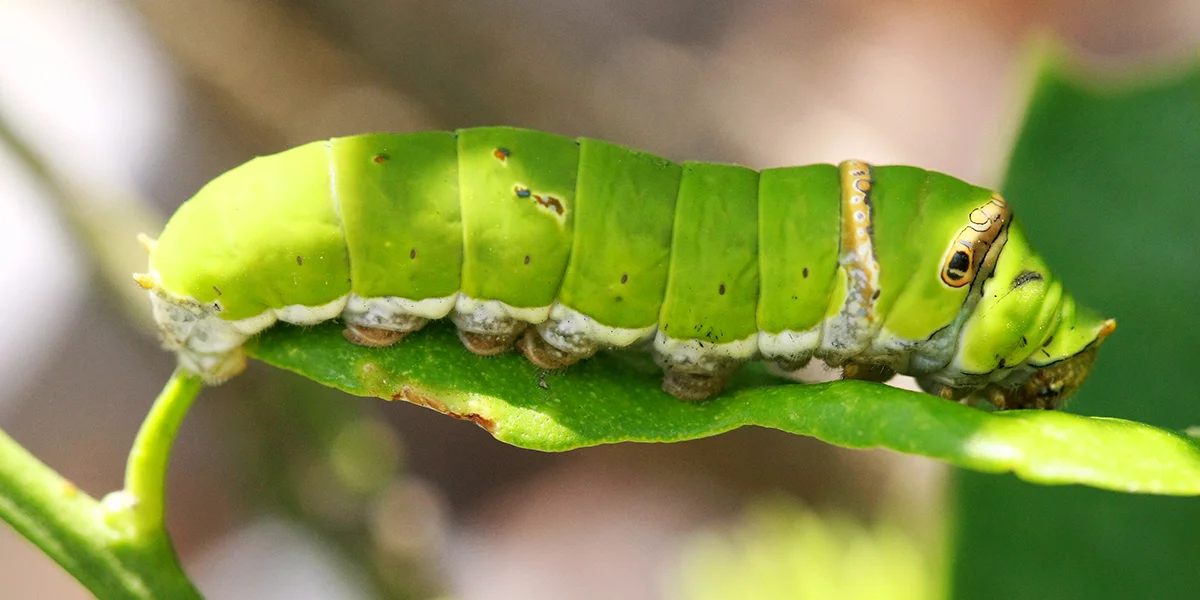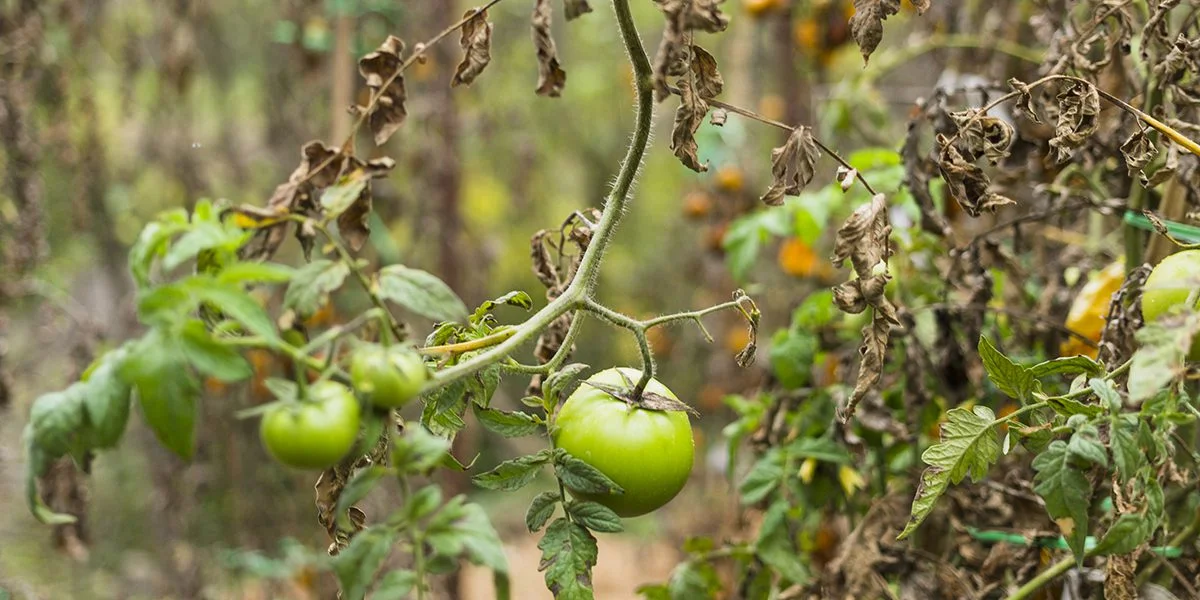How to get rid of tomato worms naturally can be a simple task with the right methods at your fingertips. Here are some effective strategies:
– Handpick the hornworms during early morning or late afternoon.
– Use a UV blacklight to spot them at night for easier removal.
– Drop them in soapy water to ensure they don’t return.
Tomato hornworms, those pesky garden pests, can wreak havoc on your tomatoes and other plants in the nightshade family. These plump, camouflaged caterpillars are notorious for their rapid defoliation abilities. But fear not, natural control methods can save your beloved garden without resorting to chemicals. Identifying the pests early and opting for eco-friendly solutions can help maintain the health of your garden ecosystem.
My name is Bill Vandeven, and I’ve dedicated years to understanding how to get rid of tomato worms naturally. I’ve helped countless gardeners protect their yields without harmful chemicals. Let’s explore how you can do the same.

How to Get Rid of Tomato Worms Naturally
Tomato hornworms might look intimidating, but getting rid of them doesn’t have to be. With a few straightforward techniques, you can protect your garden naturally and effectively.
Handpicking
One of the simplest ways to tackle a hornworm problem is by handpicking them off your plants. These caterpillars are large enough to spot with the naked eye, especially if you know where to look. Check the undersides of leaves and inner stems, where they often hide during the day.
Tip: Head out early in the morning or late in the afternoon when the worms are less active and easier to catch. Simply pluck them off and dispose of them safely.
Blacklight Method
For a fun and effective evening trip, try the blacklight method. Tomato hornworms glow under UV light, making them easier to spot at night. Grab a blacklight flashlight (available for about $11) and head out after dark. Shine the light on your plants, and you’ll see the glowing worms ready for removal.
How to do it:
- Wait until after dark.
- Shine the blacklight on the tomato plants.
- Look for the fluorescent glow of the hornworms.
- Remove them by hand.

Soapy Water
Once you’ve collected the hornworms, a simple soapy water solution can be used to ensure they don’t come back. Fill a bucket with water and add a few drops of dish soap. Drop the hornworms into the mixture, and the soap will take care of the rest.
Why it works: The soap breaks down the protective coating on the worms, effectively eliminating them without the need for harsh chemicals.
By using these methods, you can maintain a healthy and thriving garden. The key is to act quickly and consistently to keep your plants safe and flourishing.
Next up, let’s explore some natural deterrents and companion planting techniques that can help prevent these pests in the first place.
Natural Deterrents and Companion Planting
Keeping tomato hornworms at bay doesn’t always mean going on a nighttime hunt or using soapy water. Sometimes, the best defense is a good offense. Companion planting is a natural and effective way to deter these pesky caterpillars before they become a problem.
Basil
Planting basil near your tomatoes is like having a natural bodyguard for your plants. Not only does basil help repel tomato hornworms, but it also keeps other pests like thrips and aphids away. Plus, many gardeners swear that basil improves the flavor of your tomatoes too. So, you’re not just protecting your garden; you’re enhancing it!
Marigolds
Marigolds are more than just a pretty face in the garden. Their strong scent is known to deter a variety of insect pests, including the hawk moth, which lays hornworm eggs. By planting marigolds around your tomato plants, you create a fragrant barrier that keeps these pests away.
Dill
Another helpful herb is dill. Its feathery leaves not only add a touch of elegance to your garden but also attract beneficial insects like ladybugs and lacewings, which are natural predators of hornworms. Dill is a win-win, as it helps protect your tomatoes while providing a fresh herb for your kitchen.
Borage
Borage is a powerhouse in the garden. This cucumber-flavored herb produces bright blue flowers that are not only beautiful but also effective in repelling tomato hornworms. Borage attracts bees and pest-killing wasps, making it an excellent companion for your tomatoes.
Parsley and Thyme
Parsley and thyme work together to create a fragrant and effective deterrent against hornworms. These herbs not only add flavor to your dishes but also help keep your garden pest-free. They attract beneficial insects and confuse pests with their strong scents.
By incorporating these companion plants into your garden, you create a natural defense system that works tirelessly to protect your tomatoes. No chemicals, no fuss—just a harmonious garden that thrives naturally.
Next, we’ll dive into some biological control methods that can further improve your garden’s defenses.
Biological Control Methods
When it comes to dealing with tomato hornworms, nature offers some incredible allies. These biological control methods harness the power of natural predators to keep pesky caterpillars in check. Let’s explore some of these fascinating options.
Parasitic Wasps
One of the most effective natural predators of tomato hornworms is the parasitic braconid wasp (Cotesia congregatus). These tiny wasps lay their eggs on hornworms. As the eggs hatch, the larvae feed on the hornworm, eventually causing its demise. This may sound like something out of a sci-fi movie, but it’s an incredible example of nature’s balancing act. If you spot hornworms with small white cocoons on their backs, leave them be. These cocoons are the wasp larvae at work, and they’ll help reduce the hornworm population in your garden.
Bacillus thuringiensis (Bt)
Another powerful tool in the fight against hornworms is Bacillus thuringiensis, commonly known as Bt. This naturally occurring bacterium is safe for humans and beneficial insects, but it’s deadly for caterpillars. When hornworms ingest Bt, it disrupts their digestive system, eventually killing them. Bt is available in various formulations and can be applied directly to your plants. It’s a great option for gardeners looking for a targeted, eco-friendly solution.
Trichogramma
Trichogramma wasps are another fascinating biological control method. These tiny wasps target the eggs of hornworms, preventing them from hatching. By releasing Trichogramma wasps in your garden, you can intercept the hornworm problem before it even begins. These wasps are harmless to humans and beneficial insects, making them an excellent choice for organic gardening.

By integrating these biological control methods into your gardening routine, you can maintain a healthy, thriving garden without resorting to harsh chemicals. Nature has a way of balancing itself, and with a little help from these tiny allies, your tomato plants will be well-protected.
Next, we’ll explore soil and garden maintenance techniques to further bolster your garden’s defenses.
Soil and Garden Maintenance
To keep your garden thriving and hornworm-free, maintaining your soil and garden environment is key. Let’s explore some effective strategies: soil cultivation, crop rotation, and using a UV blacklight for pest control.
Soil Cultivation
Healthy soil is the foundation of a vibrant garden. Regular cultivation helps aerate the soil, improving water drainage and nutrient absorption. This not only benefits your plants but also disrupts the life cycle of pests like tomato hornworms. By tilling your soil, you can expose hornworm pupae, reducing their chances of maturing into moths.
- Aeration: Use a garden fork or tiller to loosen the soil around your plants. This encourages root growth and makes it harder for pests to settle in.
- Compost Addition: Enrich your soil with organic matter like compost. Not only does this improve soil health, but it also attracts beneficial insects that prey on hornworms.
Crop Rotation
Crop rotation is a simple yet powerful technique to prevent pest build-up in your garden. By changing the location of your tomato plants each season, you can break the life cycle of hornworms and other pests that overwinter in the soil.
- Rotate Families: Avoid planting tomatoes and other nightshade family plants (like peppers and eggplants) in the same spot year after year.
- Diverse Planting: Introduce a variety of crops to your garden. This diversity can confuse pests and reduce their impact.
UV Blacklight
A UV blacklight is a gardener’s secret weapon against hornworms. These caterpillars glow under UV light, making them easy to spot and remove by hand.
- Nighttime Inspections: Head out to your garden after dark with a UV flashlight. Shine it over your plants to reveal any lurking hornworms.
- Hand Removal: Once spotted, simply pick the hornworms off your plants. This method is effective and ensures you remove pests before they cause significant damage.
By focusing on soil and garden maintenance, you create an environment where your plants can thrive and pests struggle to survive. These natural methods are not only effective but also align perfectly with the Garden Patch GrowBox™ philosophy of easy, successful gardening.
Next, we’ll tackle some frequently asked questions about tomato worms and explore homemade remedies to keep these pests at bay.
Frequently Asked Questions about Tomato Worms
What is a homemade remedy for tomato worms?
Getting rid of tomato worms naturally is easier than you might think. A popular homemade remedy involves using liquid dish soap and cayenne pepper. Here’s a simple recipe to create your own deterrent spray:
- Mix Ingredients:
- Combine 2 cups of water with 1-2 teaspoons of liquid dish soap.
-
Add ½ teaspoon of cayenne pepper or 1 ounce of hot sauce.
-
Steep and Spray:
- Let the mixture sit overnight for the best results.
- Spray it generously on both the top and underside of the tomato leaves several times a week, especially after it rains.
This solution is effective because the soap helps the spray stick to the leaves, while the cayenne pepper acts as a natural deterrent, making your plants less appealing to tomato worms.
How do I stop worms from eating my tomatoes?
One of the most straightforward methods to protect your tomatoes is hand removal. It’s simple, effective, and doesn’t require any chemicals.
-
Daily Inspection: Check your plants every day for signs of hornworms. Look for wilted leaves, scars on tomatoes, and dark droppings.
-
Pick and Dispose: Once you spot a hornworm, pick it off by hand and drop it into a bucket of soapy water. This humane method ensures that the worms won’t return to your plants.
If you prefer a ready-made solution, consider using insecticidal soap. This is a low-toxicity option that targets the worms without harming your plants or beneficial insects.
Will cayenne pepper keep tomato worms away?
Absolutely! Cayenne pepper is a fantastic natural deterrent for tomato worms. Its spicy nature makes it unpleasant for the worms, encouraging them to find their meals elsewhere.
To maximize effectiveness, use the cayenne pepper spray mentioned earlier. Regular applications will help keep your garden pest-free without resorting to harsh chemicals.
By incorporating these natural remedies into your gardening routine, you can keep your tomato plants healthy and thriving. With a little effort and the right techniques, you can enjoy a bountiful harvest the natural way!
Conclusion
Gardening should be a joy, not a chore. With the Garden Patch™ GrowBox™, achieving a lush and productive garden is as easy as pie. Our self-watering, self-fertilizing system takes the guesswork out of gardening, ensuring your plants get just what they need to thrive.
This innovative solution is perfect for anyone looking to grow their own food effortlessly. Whether you’re a seasoned gardener or a complete newbie, the GrowBox™ makes it possible to enjoy high yields with minimal effort. Imagine picking juicy, fresh tomatoes right from your patio or balcony, knowing they’re free from harmful chemicals.
Our Nutrient Patch™ ensures your plants receive consistent nutrition throughout the growing season. Say goodbye to the hassle of mixing fertilizers or worrying about over or under-watering. The GrowBox™ does it all, so you can focus on enjoying the fruits of your labor.
Plus, our system promotes sustainable gardening practices. By using the GrowBox™, you’re not just growing your own food; you’re also contributing to a healthier planet. Our patented design helps reduce water waste and eliminates the need for chemical pesticides, making it a win-win for you and the environment.
Ready to transform your gardening experience? Find the ease and satisfaction of growing with the Garden Patch™ GrowBox™. You’ll be amazed at how simple it is to achieve a bountiful harvest. Visit our Tomato Hornworm Damage page to learn more about how our products can help you keep your garden pest-free and thriving.
With the GrowBox™, gardening is not just easy—it’s fool-proof. Happy growing! 🌱




